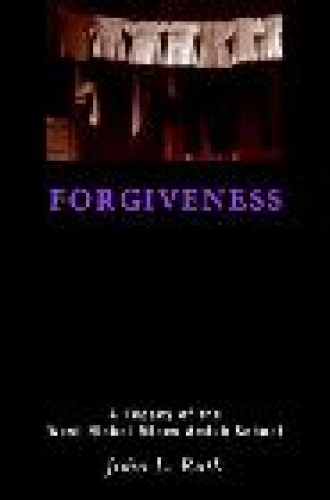Miracle of forgiveness
On the morning of October 10, 2006, a 33-year-old milk truck driver from Lancaster County, Pennsylvania, affectionately hugged his two oldest children as they boarded the school bus. He made a brief stop at a hardware store before driving his pickup truck to the front door of a one-room Amish schoolhouse near the hamlet of Nickel Mines. What happened next defies imagination. After ordering most of the building’s inhabitants to leave, the man tied ten Amish schoolgirls together on the floor. Then, as police gathered outside the school, Charles Carl Roberts IV systematically shot the ten little children—ultimately killing five of them—before taking his own life.
Despite its unlikely setting, the story of the shootings at the West Nickel Mines schoolhouse initially followed a painfully familiar storyline. Since the Columbine massacre in 1999 there have been almost 20 school-shooting incidents in the United States, including the one in which 33 students were killed last April at Virginia Tech. Moreover, images of cruel and violent deaths—either on the evening news or in the numbing variety of violent TV shows that pass for entertainment—have become standard fare in American media.
What stunned the watching world in the days following the Nickel Mines shooting was less the horrific violence than the response of the Amish community. Within hours of the tragedy, various Amish spokespersons, including members of the families directly affected by the massacre, were speaking the language of forgiveness.
That same evening, a steady stream of Amish visitors came to the home of Amy Roberts, the widow of the gunman, to offer condolences. “Stay in your home here,” an Amish delegation told her shortly thereafter. “We have forgiven your husband, . . . and we share in your sorrow.” “We shouldn’t think evil of the man who did this,” a grandfather of one of the victims admonished children standing at the girl’s grave. “He, too, is a child of God.”
Within a week, at least 2,400 news stories had been published around the world focused on the theme of forgiveness, many of them expressing amazement that half of the 70 people who attended the burial of Charles Carl Roberts IV were Amish, or bewilderment that the committee overseeing public donations had announced that a portion of the money would be set aside in a trust fund for the Roberts family.
Sensational media stories inevitably give rise to a flurry of follow-up books—usually breathless, hastily written journalistic accounts that flourish, then fade like cut flowers once the public hunger has been satiated. We are fortunate, therefore, that the first two books on the Nickel Mines shootings were written by renowned scholars, all of them known and trusted within the Amish community. Both books situate the Nickel Mines incident within the broader context of Amish faith and culture; both acknowledge the complexity of forgiveness, refusing to sentimentalize the Amish response; and both anticipate the difficult questions people are likely to raise about that response. Although the two books differ in tone and each is worth reading in its own right, the texts overlap enough that time-conscious readers may choose to read only one.
In Forgiveness, John L. Ruth—well-known storyteller, filmmaker and author of a landmark history of Mennonites and Amish in Lancaster County—brings together a collection of 20 elegant meditations that combine an informative overview of Amish practice with an elegiac prose style. The Amish, claims Ruth, are steeped in the Hebraic themes of New Testament scriptures rather than the vengeance narratives of Greek tragedy. They “do not feel they are in a position to announce what God must, or even will, do . . . and thus do not need explanations or advice from books like When Bad Things Happen to Good People to get their bearings.” What they do know, however, is that forgiving love is not merely “a devotional ideal, but a command to be obeyed”—a condition of the heart rooted in the teachings and example of Jesus and in God’s own gracious act of forgiveness.
Ruth’s ruminations are wide-ranging, weaving the Nickel Mines story into reflections on Desmond Tutu, Amish hymnody and “national metanarratives.” “No monument will be raised at Nickel Mines,” he concludes, “but in hearts around the world there is a fresh echo of the words and example of Jesus Christ. A people synonymous with holding on have shown how to let go. A ‘backward’ people have pointed the way forward.”
Three of the world’s leading experts on the Amish—Donald Kraybill, Steven Nolt and David Weaver-Zercher—collaborated in the writing of Amish Grace. Drawing on numerous interviews with local Amish and on dozens of print sources, Amish Grace provides a more nuanced and systematic approach to the Nickel Mines story and the complex question of forgiveness. Part one offers a detailed recounting of the events surrounding the shootings and the initial public reaction to the story of Amish forgiveness, part two focuses on the theme of forgiveness as a pervasive and constitutive characteristic of Amish culture, and part three addresses larger questions regarding justice, the meaning of forgiveness and the Amish practice of shunning.
Amish Grace is particularly attentive to the backlash of criticism that arose amid the public praise for the Amish. Some commentators, for example, insisted that the Amish offer of forgiveness came far too quickly. Others thought that only the parents of the murdered children—or perhaps only the surviving children themselves—had the right to forgive. And at least one editorialist worried about the callousness of a culture that was not able to express righteous outrage at the massacre of innocent children.
Even if many of these critics were misinformed about Amish faith and culture, the authors of both books respond seriously to their concerns. It is this discussion, more than the sensational events of the Nickel Mines story itself, that makes these books compelling reading.
Until recently, standard textbook approaches to Christian ethics have generally framed moral questions in terms of a dilemma (for example, Christ’s call to love enemies versus the Christian responsibility to defend the weak), then challenged students to struggle intellectually to resolve the quandary in a rational, consistent and universally applicable manner, while often recognizing the tragic dimensions of the final outcome.
As these books make clear, the Amish approach to moral decision making is fundamentally different—so different, in fact, that the speed of their decision to forgive Charles Carl Roberts IV for the murder of their children is not a mark of naïveté or moral superficiality, but precisely the opposite.
The Amish regard Christian ethics not as a series of intellectual problems to be resolved, but as a richly textured way of life embodied in the habits and practices of a worshiping community that is committed to following the way of Jesus. The heart of this approach to ethics is a posture of yieldedness (Gelassenheit or uffgevva)—that is, a conscious yielding of the self to God and to the community. Uffgevva is not an abject denial of individuality but the cultivation of daily practices of vulnerability, trust and interdependency.
At the very heart of this theological worldview is the practice of forgiveness. The God the Amish worship, write the authors of Amish Grace, “fully expects human beings to love their enemies and forgive their debtors.” Indeed, no text is more central to Amish spirituality than the Lord’s Prayer. It is prayed at least twice a day at home and during every church service, and the words “forgive us our sins, as we forgive those who sin against us” are understood as both judgment and gracious gift. The Amish take seriously the uncomfortable admonition repeated at the end of the Matthean version of the prayer: “If you do not forgive others, neither will your Father forgive your trespasses” (Matt. 6:15). The theme of forgiveness is at the very center of Amish storytelling, hymnody, lectionary readings and worship practices—particularly the liturgy of communion and foot washing.
The commitment to forgiveness is not a pious sentiment or abstract theological ideal, but an embodied practice that permeates all of life. Both books make it clear, for example, that the forgiveness extended by the Amish at Nickel Mines is fully consistent with a long pattern of similar responses to previous incidents in which crimes or recklessness led to innocent deaths. In general, the Amish are not opposed to state-sanctioned consequences; but on a personal level they have repeatedly extended forgiveness to those who have caused injury or death—often establishing ongoing relationships with the families of perpetrators—and they frequently refuse to accept wrongful-death insurance settlements.
They do this not because they are emotionally callous. The Amish clearly care deeply for their children and are not ashamed to shed tears in the face of loss. But they are more willing than most modern people to accept the fact that God’s will is bigger than human understanding and that final judgment will be in God’s hands rather than in our own.
Clearly, as both books readily acknowledge, the Amish are not perfect. At times the impulse to forgive has prematurely and only superficially resolved problems of alcoholism and sexual abuse in their midst, and their principled commitment to discipline unrepentant members, sometimes even with shunning, strikes some outside observers as hypocritical.
Nevertheless, the Amish response to the massacre at Nickel Mines has become a fact of history that complicates the world for the rest of us by making forgiveness of enemies in the face of horrific violence more than a merely theoretical ideal. And even though the physical scars and memories will not disappear, the power of forgiveness continues to echo in the lives of the survivors. Last Christmas a group of Amish schoolchildren went to the Roberts home to sing carols; in April, members of the Roberts family planted a tree in the playground alongside a newly constructed Amish schoolhouse; and inside that simple structure a wall motto continues to hang, bearing the words “Visitors Brighten Our Days.”
Perhaps the most powerful legacy of the Nickel Mines story is this sense of surprising, imaginative and hopeful possibilities. Ruth says it well: “What if the religions of the earth’s billions would encode an elemental attitude of forgiveness rather than entitlement? What if those tempted to get even would have been suffused by nursery training with the mystery of forgiveness? What if the paradigm of the cross of Christ would become the logic of the human heart?” What if?






